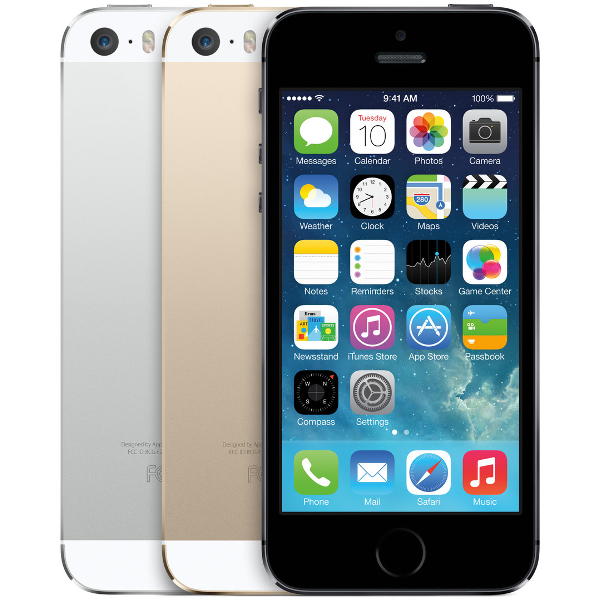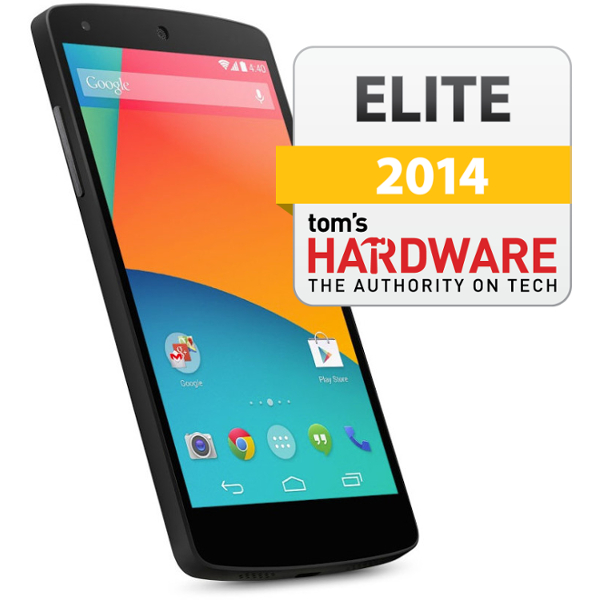Nokia Lumia Icon & Lumia 930 Review: Windows Phone, Premium
We took Nokia's Lumia Icon for a month-long test to really experience life with the company's flagship Windows Phone 8-based platform. Some of the benchmark results from this Snapdragon 800-powered powerhouse may surprise you.
Benchmark Suite, Methodology, And Test System Specs
Benchmark Suite
Comparing smartphone performance is a little more challenging than comparing PC components, since we have to find benchmarks that work across Windows Phone 8, Android, and iOS. Of the three, Windows Phone 8 has the lowest number of cross-platform testing apps, which makes sense when you consider its marketshare. Not only that, but particular phone models are sometimes incompatible with specific metrics, throwing yet another wrench in the pipe.
| CPU Core & System Tests | Rightware Basemark OS II Full |
|---|---|
| GPU Core & Graphics Tests | Rightware Basemark X 1.1 Full |
| Web Tests | Rightware Browsermark 2.0 |
| Futuremark Peacekeeper 2.0 | |
| Principled Technologies WebXPRT 2013 | |
| Display Measurements | Minimum & Maximum Brightness |
| Black Level | |
| Contrast Ratio | |
| Gamma | |
| Color Temperature | |
| sRGB & AdobeRGB Color Gamut Volume | |
| Battery Tests | Rightware Basemark OS II Full |
| Camera Tests | Rightware Basemark OS II Free |
Further complicating today's performance analysis, we test all of our smartphones at a calibrated 200 nits of screen brightness to ensure comparable battery life and display measurements. Unfortunately, Windows Phone 8 does not have an adjustable screen brightness slider; it is limited to three factory preset settings: low, medium, and high. To provide comparable battery life and display measurements, we had to test at those three brightness levels and use them to extrapolate a 200 nit calibrated result. It's not ideal, but it's the best possible method we have at our disposal.
Test System Specs
Despite these challenges, Tom's Hardware is all about objective measurements and we've done our absolute best to provide the most cross-platform tests for as many platforms and SoCs as possible.
The iPhone 5s represents ARM v8, Meizu's MX3 represents the Exynos 5 Octa, Xiaomi's Mi3 represents the Nvidia Tegra 4, Google's Nexus 5 represents Snapdragon 800 performance on Android, and the HTC 8x represents the previous generation of Windows Phone 8 device performance with a dual-core Snapdragon S4 Plus at 1.5 GHz.
| Device | SoC | CPU | GPU | RAM | Display | Operating System |
|---|---|---|---|---|---|---|
| Apple iPhone 5s | Apple A7 | Apple Cyclone (dual-core) @ 1.3 GHz | Imagination Technologies PowerVR G6430 (four-cluster) @ 200 MHz | 1 GB DDR3 | 4" IPS @ 1136x640 (326 PPI) | Apple iOS 7.1 |
| Google Nexus 5 | Qualcomm Snapdragon 800 (MSM8974AA) | Qualcomm Krait 400 (quad-core) @ 2.26 GHz | Qualcomm Adreno 330 (quad-core) @ 450 MHz | 2 GB DDR3 @ 800 MHz | 4.95" IPS @ 1920x1080 (445 PPI) | Google Android 4.4.4 (GPe w/GEL) |
| Meizu MX3 | Samsung Exynos 5 Octa (5410) | ARM Cortex-A15 (quad-core) @ 1.6 GHzARM Cortex-A7 (quad-core) @ 1.2 GHz | Imagination Technologies PowerVR SGX544MP3 (triple-core) @ 532 MHz | 2 GB DDR3 | 5" IPS @ 1920x1080 (412 PPI) | Google Android 4.2.1 (FlymeOS 3.1.1) |
| Xiaomi Mi3 | Nvidia Tegra 4 (T114) | ARM Cortex-A15 (quad-core) @ 1.8 GHz | Nvidia GeForce ULP (72-core) @ 672 MHz | 2 GB DDR3 | 5" IPS @ 1920x1080 (441 PPI) | Google Android 4.2.1 (MIUI 4.1.24) |
| HTC 8x | Qualcomm Snapdragon S4 Plus | Qualcomm Krait (dual-core) @ 1.5 GHz | Qualcomm Adreno 225 | 2 GB DDR2 | 4.5" AMOLED @1280x768 (342 PPI) | Microsoft Windows Phone 8 |
| Nokia Lumia Icon/930 | Qualcomm Snapdragon 800(MSM8974VV) | Qualcomm Krait 400 (quad-core) @ 2.15 GHz | Qualcomm Adreno 330 @ 450 MHz | 2 GB DDR3 @ 800 MHz | 5" AMOLED @ 1920x1080 (441 PPI) | Microsoft Windows Phone 8 |
Get Tom's Hardware's best news and in-depth reviews, straight to your inbox.
Current page: Benchmark Suite, Methodology, And Test System Specs
Prev Page Microphones And Video Next Page Results: System And Graphics TestsDon Woligroski was a former senior hardware editor for Tom's Hardware. He has covered a wide range of PC hardware topics, including CPUs, GPUs, system building, and emerging technologies.
-
Amdlova only problem on this phone is (verizon)... if you wanna spend 150us and a 1000 years contract. =) is right that numbers on benchies ? direct 3d working?Reply -
silverblue Sorry for the possible double post, but this comments section is bugged to hell, so...Reply
I'm surprised by the bloat. My 1020 (with Windows Phone 8.1) has 32GB, of which 29 is available, after O2's (slight) footprint. -
vaughn2k I have a Lumia 925. I will wait for the Windows Phone 8.1 update, that it seems promising... So the question if I will switch from IOS/Android to WP, then I guess I did, the 925 seems also a great phone, and the 'Store' has already a quite considerable amount of programs (or Apps)....Reply -
aldaia Wait, a "flagship Windows phone" powered by Qualcomm Snapdragon 800. Intel push into the smartphone market is certainly doomed.Reply -
tomfreak We just need Lumia 1020 sucessor = Lumia 1030 with snapdragon 800 to handle the 40MP picture. A 40MP Lumia 1030 with snapdragon 800 CPU + 2GB RAM + 32GB storage + SD card expansion + a 3000mah battery will be the killer phone that no one is able beat it. Photography takes a lot of battery drain, since thats how Lumia 1020 good at, I just hope Nokia/Microsoft put a much bigger battery inside for successor.Reply -
megamanxtreme All is well, I still got my Lumia 1520, and it still reigns the king. 920/930 with bigger screen, for the win.Reply -
Aoyagi Yeah, nice toys. About what the reviewer wanted, by the looks of it. But using these things as tools rather than toys for consuming media and maybe reading mail? No way.Reply
(I had been using Lumia 920 before I returned to 808 PureView. I still have it for testing purposes)
13186987 said:I'm surprised by the bloat. My 1020 (with Windows Phone 8.1) has 32GB, of which 29 is available, after O2's (slight) footprint.
Most of that is the OS itself. -
satish12321 Dude, how could you forget LIVE TILES. This single handedly put Lumia ahead of its competitors. Especially the new updates that will make it more informative.Reply
Android and iOs are like a graveyard of dead icons. If they font adapt, their fingerprint sensor, eye recognition and waterproofing wont be able to protect it. -
Au_equus Don, the specs listed in the table (first page) do not match the description given in the article.Reply -
jasonelmore why the hell does Verizon think they must put their logo on the phone? my god i would never buy a phone that had carrier branding on the front or back of the phone. Plus Verizon's logo is FuglyReply


